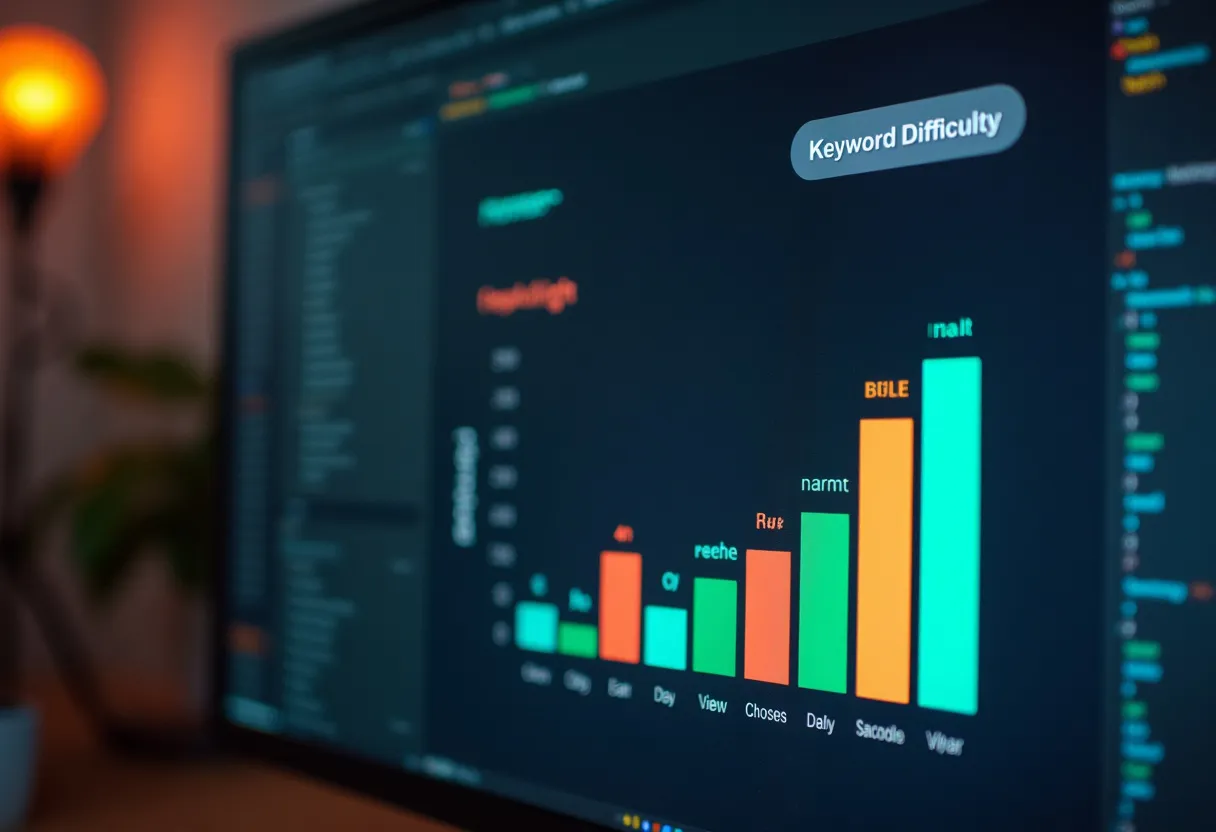Definition
What is Keyword Difficulty?
Keyword difficulty, also known as SEO difficulty or keyword competition, is an SEO metric that estimates how challenging it is to rank for a specific keyword on search engines like Google. It measures the level of competition and the difficulty in achieving a prominent position in the search engine results pages (SERPs) for a given keyword.
How It Works
Function and Concept
Keyword difficulty scores are typically presented as a numerical value or a scale (e.g., 0-100, low, medium, high) to indicate how hard or easy it is to rank for a particular keyword. This metric is calculated based on various factors, including:
- The number of referring domains and backlinks to the top-ranking pages.
- The website authority and page authority of the top-ranking pages.
- The quality of the content and on-page optimization of the competing websites.
- SERP features and other keyword characteristics.
Practical Use Cases
SEO teams use keyword difficulty scores to prioritize their keywords or topics, focusing on keywords with manageable difficulty levels to improve their chances of ranking higher in SERPs. It helps in identifying off-topic keywords that can be ranked easily without hurting the brand image. It also aids in the prioritization of backlink acquisition, as keywords with low difficulty require fewer backlinks compared to high-difficulty keywords.
Why It Matters
Importance in SEO
Understanding keyword difficulty is crucial for a successful SEO strategy. It helps in finding and prioritizing keywords that are feasible to rank for, thereby optimizing content strategy and improving search engine rankings. Keyword difficulty scores help in avoiding high-competition keywords that may be too challenging to rank for, and instead focus on keywords with a balance between search volume and competition. It impacts website performance by guiding the allocation of resources and efforts towards keywords that are likely to generate more traffic and conversions.
Best Practices
Recommended Methods and Tools
Use Keyword Research Tools: Utilize tools like Ahrefs, Semrush, Moz, and KWFinder to get keyword difficulty scores. Each tool may use different metrics, but they all provide valuable insights into the competitiveness of a keyword.
Analyze Competitors: Evaluate the backlink profiles, content quality, and on-page optimization of the top-ranking websites for the target keyword. This helps in understanding the level of competition and what is required to outrank them.
Personalized Keyword Difficulty: Use tools like Semrush that offer personalized keyword difficulty scores (PKD) which consider your website’s authority and provide a more accurate estimate of the difficulty level for your specific site.
Strategies and Tips
Target Balanced Keywords: Focus on keywords with medium difficulty (e.g., 31-60) which often have a balance between search volume and competition. These are more realistic and profitable to target.
Long-Tail Keywords: Identify and target long-tail keywords which are more specific, have lower difficulty scores, and less competition. These can lead to higher conversion rates.
Content Quality and Relevance: Ensure that the content is of high quality and relevant to the target keyword. This aligns with the search intent and improves the chances of ranking higher.
Optimization
Backlink Acquisition: Prioritize backlink acquisition based on the keyword difficulty. High-difficulty keywords require more backlinks and a stronger link profile.
SERP Features and Trends: Consider the presence of SERP features and trends in search volume when evaluating keyword difficulty. These factors can significantly impact the competitiveness of a keyword.
Conclusion
Understanding keyword difficulty is a fundamental step in the SEO process, providing insight into how challenging it will be to rank for specific keywords. By leveraging tools like Ahrefs, Semrush, Moz, and KWFinder, and employing strategies like targeting balanced keywords, focusing on long-tail keywords, and ensuring high-quality content, SEO professionals can develop more effective strategies and improve their chances of ranking higher in SERPs. Additionally, considering factors like backlink acquisition, SERP features, and trends in search volume can further refine the approach and optimize overall SEO performance.
Key related terms: Keyword Difficulty, Competitor Keyword Analysis, Backlink Building, Search Volume, Keyword Research, Keyword Ranking, Keyword Intent, Long-tail Keyword, SEO Audit, Domain Authority Stacking.



